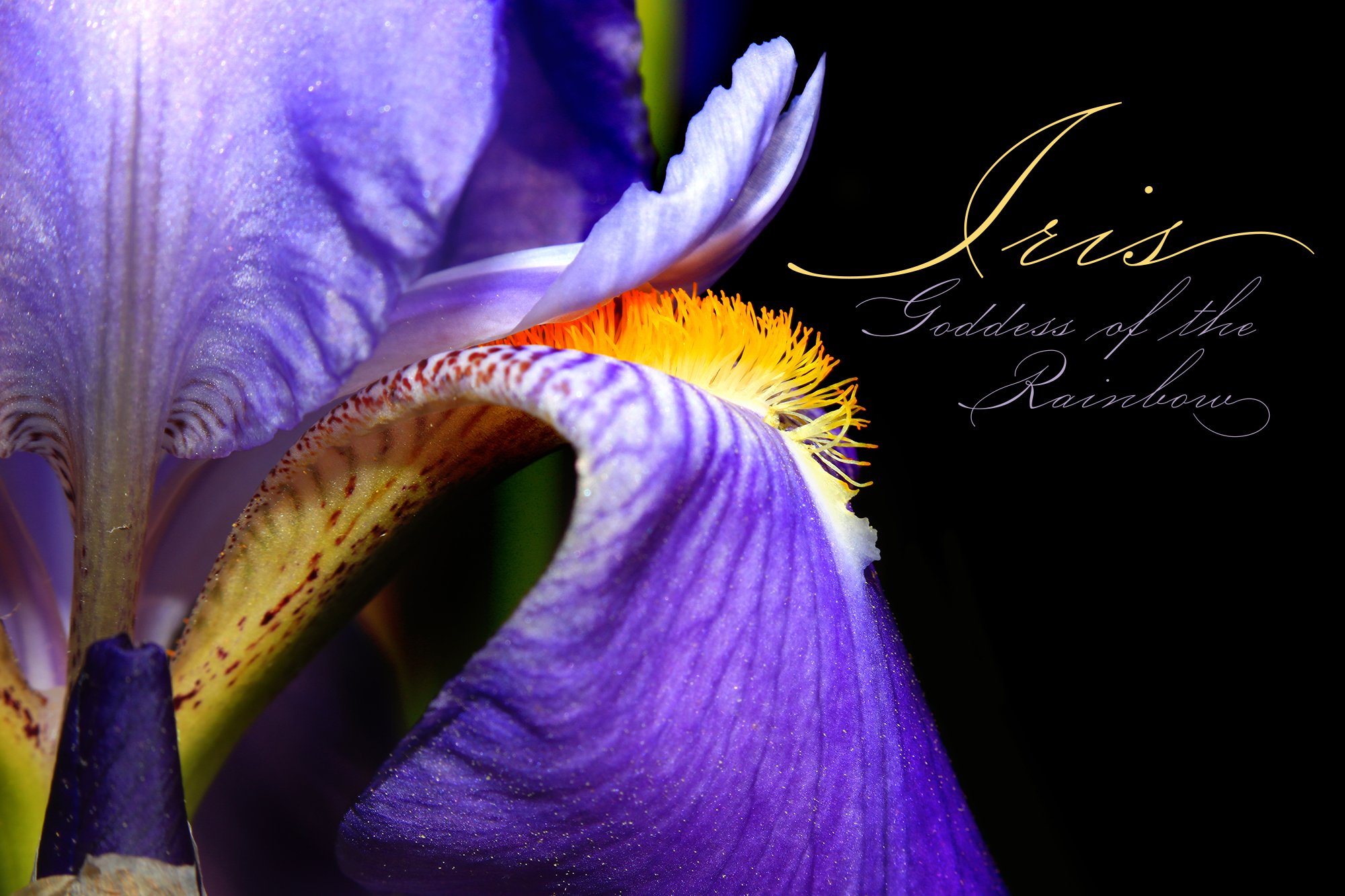- © 2025 Annapolis Home Magazine
- All Rights Reserved

If one pays close attention, nature communicates the divine. The regal bearded iris, with its astonishing ruffles, is particularly eloquent. When my iris bloomed en masse for the first time, I stood in a state of rapture, transfixed before a deep purple blaze. Pulitzer Prize-winning poet Louise Gluck devoted an entire book to this mesmerizing monocot. In The Wild Iris, the iris speaks to us:
You who do not remember
Passage from the other world
I tell you, I could speak again: whatever
Returns from oblivion returns
To find a voice:
From the center of my life came
A great fountain, deep blue
Shadows on azure seawater.
Gluck writes from the viewpoint of the iris, addressing the reader from “the other world” that is deep below ground. The iris breaks through the surface of the earth to find its voice, to share, exquisitely, what it is like to burst into being, into bloom—“from the center of my life came a great fountain…”
Gluck is not alone in her devotion to the iris, which has an enchanting history. The iris is named after the Greek goddess Iris, the goddess of the rainbow. In the Greek language, the word “iris” means rainbow, and “eiris” means messenger. The Dictionary of Greek and Roman Biography and Mythology notes that in addition to generating rainbows, Iris used her light to create multicolored flames to deter enemies. Iris also traveled on rainbows, carrying messages from the gods to mortals. Legend has it that colorful flowers sprung up wherever she stepped. To this day, we call
them iris.
The cultivation of the iris dates back over three thousand years to 1469 B.C. King Thutmose III of Egypt was an avid gardener obsessed with acquiring new plants. When Egypt conquered Syria, he found iris growing in abundance. Shortly after introducing them to his gardens, the iris became popular. To the Egyptians, it symbolized both the essence and renewal of life. Depicted in many ancient carvings, the shapely flower may have inspired the fleur-de-lis emblem adopted by the French monarchy in the medieval ages. This iconic symbol still permeates modern culture.
The most popular iris today may be the bearded iris (Iris Germanica). They have brightly colored fuzzy “beards” that appear on the “falls” or petals that droop downward and attract pollinators. The upright petals on an iris are called “standards.” Ben Schreiner helps manage Schreiner’s Iris Gardens in Oregon, founded by his great-grandfather F. X. Schreiner in 1925. Schreiner, who handles over five million irises a year, notes that iris are not only beautiful and available in hundreds of hues and color combinations, they are very easy to grow. “We dig out the iris in September, put them in black trays, and leave them outside all winter with no medium [dirt] in the trays. When we plant them in April, they will grow in the field,” he explains. Occasionally, he has dropped an iris only to find it growing on its own, sprouting roots and “planting itself” right in the ground.
He explains that iris are not bulbs, as many assume, but “rhizomes.’ September and October are ideal months in Maryland for planting and transplanting iris. To plant, lay each one down sideways in a shallow trough and cover lightly with dirt, with the top slightly exposed. They prefer slightly acidic, well-drained soil and at least six hours of full sun. Iris take a year or two to bloom but multiply year after year and become larger and more beautiful as they age.
However, keep an eye on them. Divide your iris every three to four years, or they may stop blooming. No need to stress out over this, says Schreiner. Simply lift the rhizome out, snap off any protruding “limbs,” and replant the largest ones. To encourage bigger blooms, Schreiner suggests fertilizing with bonemeal or a 6-10-10 fertilizer one month prior to budding. In our zone 7, this would be late April.
Iris is the perfect plant for the beginner. If you don’t have any, shop for them locally or find a friend who has transplants to give away. For a treat and an education, check out Schreiner’s website to browse prize-winning cultivars and bi-colored Japanese hybrids. I suggest planting 5 to 7 at a time.
I promise your garden and your being will never be the same. It is never too late to pay homage to this gorgeous creation, to study its intricate anatomy, and to summon the rainbow to the garden.
• Plant iris in full sun (6 to 8 hours a day).
• Dig a shallow trench, sprinkle bonemeal, and place sideways.
• Cover with soil, leaving the top of the rhizome partially exposed.
• Water once. Do not overwater.
• Divide every 3 to 4 years.
Schreiner’s Iris Gardens, schreinersgardens.com | Historic Iris Preservation Society, historiciris.com | The Wild Iris (Ecco Press, 1992), bookshop.org
© Annapolis Home Magazine
Vol. 14, No. 5 2023